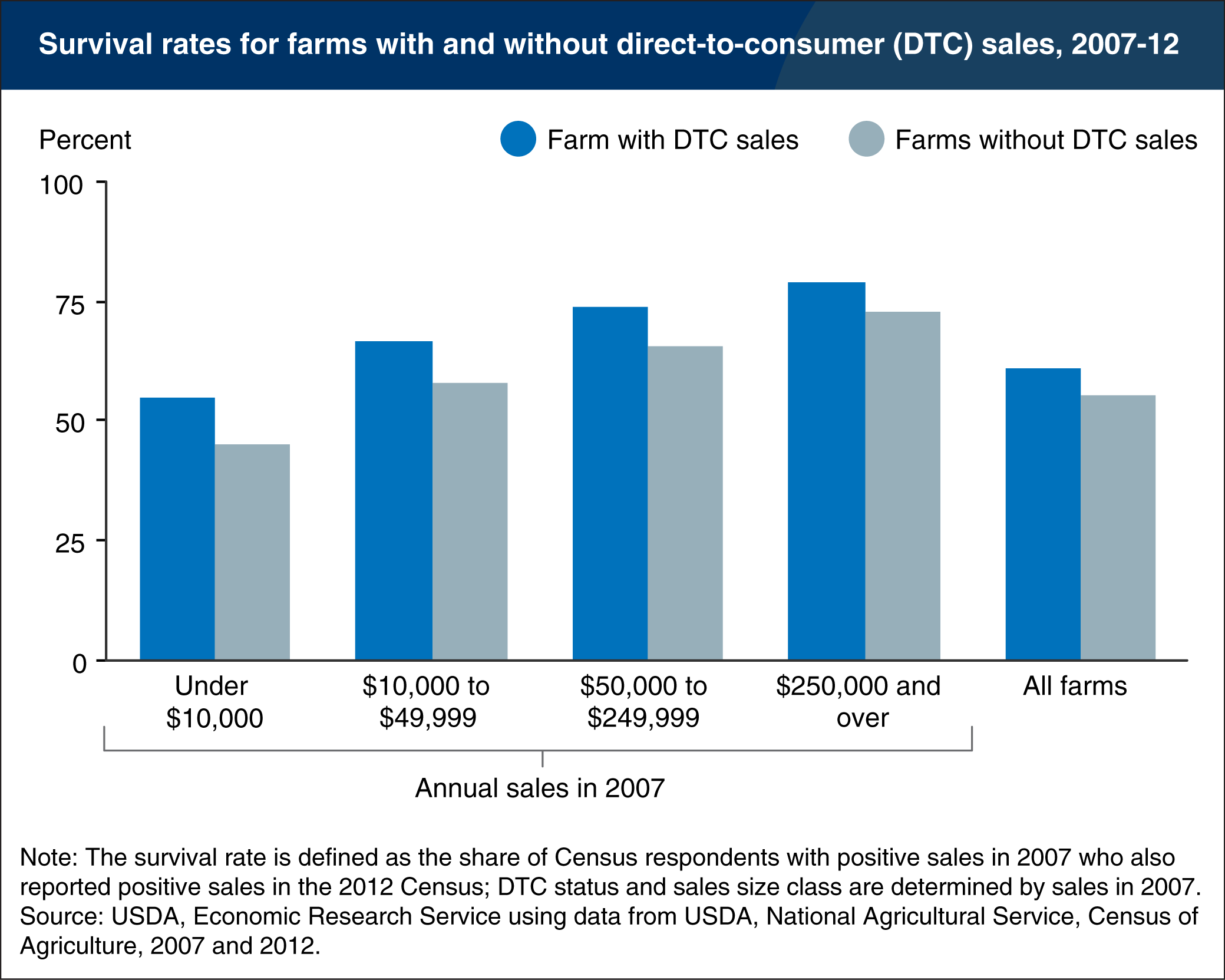Farms with direct-to-consumer (DTC) sales had higher rates of business survival between 2007 and 2012
- by Nigel Key
- 3/8/2016

Direct-to-consumer (DTC) marketing—where producers engage with consumers face-to-face at roadside stands, farmers’ markets, pick-your-own farms, onfarm stores, and community-supported agricultural arrangements (CSAs)—brings benefits for consumers as well as the farm businesses. According to Census of Agriculture data, farmers who market food directly to consumers had a greater chance of remaining in business than those who market through traditional channels. Sixty-one percent of farms with DTC sales in 2007 were in business under the same operator in 2012, compared with 55.7 percent of all U.S. farms. Based on a comparison of farms across four size categories (defined by annual sales), farmers with DTC sales had a higher survival rate (measured as the share of farmers who reported positive sales in 2007 and 2012) in each category. The differences in survival rates were substantial—ranging from 10 percentage points for the smallest farms to about 6 percentage points for the largest. This chart is found in the March 2016 Amber Waves feature, “Local Foods and Farm Business Survival and Growth.”

